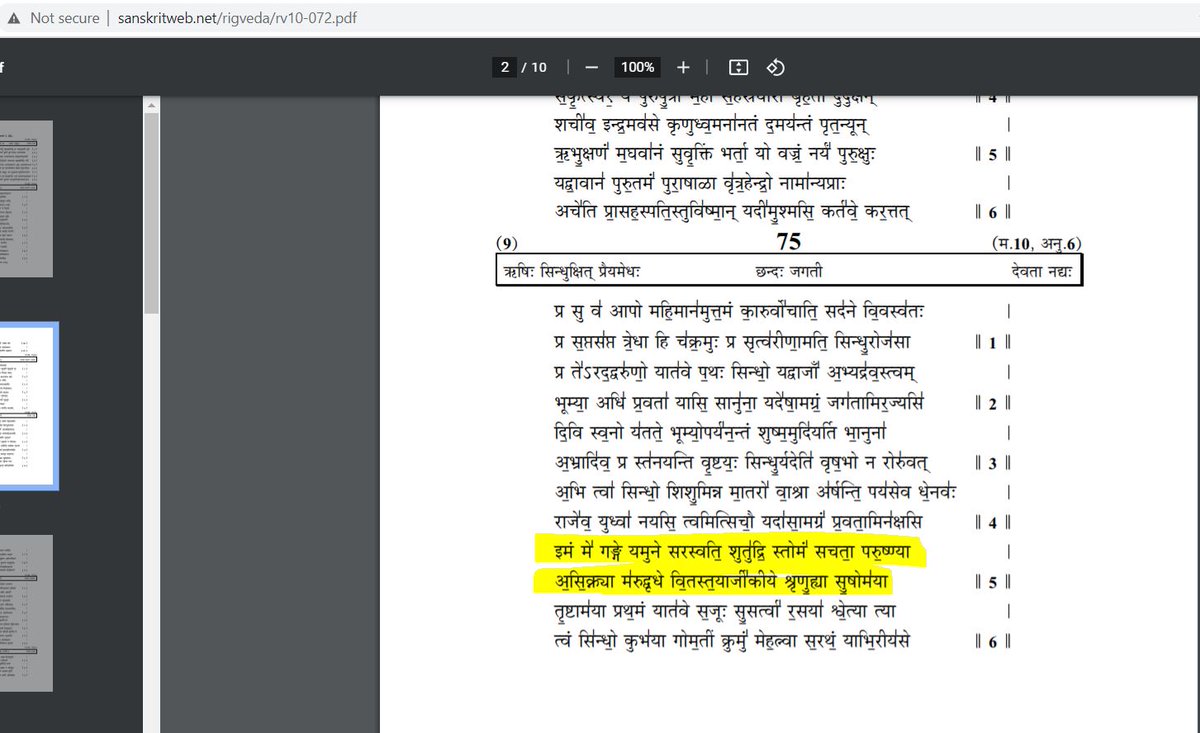
Here's listing errors here, one by one not in any specific order.
*ಬತ್ತೀಸ್ ಎಂಬ ಪದ ಹಿಂದಿ ಅಥವಾ ಉರ್ದುವಿನಿಂದ ಬಂದಿದೆ
ಬಸವಣ್ಣ(೧೧೨೪-೧೧೯೯ )ಅವರ ವಚನ"ಎನ್ನಕಾಯವ" 1199ಕ್ಕೆ ಮೊದಲಿನದು.
ಘೋರಿಯ ಗುಲಾಮ ಕುತ್ಬುದ್ದೀನ್ ಐಬಕ್ ದೆಲ್ಲಿಯನ್ನು ಆಳಲಾರಂಭಿಸಿದ್ದೇ ೧೧೯೨. ಆಗಿನ್ನೂ ಉರ್ದು ಎಂಬ ಹೆಸರಿನ ಯಾವ ಭಾಷೆಯೂ ಇರಲಿಲ್ಲ.
1/n
*ಬತ್ತೀಸ್ ಎಂಬ ಪದ ಹಿಂದಿ ಅಥವಾ ಉರ್ದುವಿನಿಂದ ಬಂದಿದೆ
ಬಸವಣ್ಣ(೧೧೨೪-೧೧೯೯ )ಅವರ ವಚನ"ಎನ್ನಕಾಯವ" 1199ಕ್ಕೆ ಮೊದಲಿನದು.
ಘೋರಿಯ ಗುಲಾಮ ಕುತ್ಬುದ್ದೀನ್ ಐಬಕ್ ದೆಲ್ಲಿಯನ್ನು ಆಳಲಾರಂಭಿಸಿದ್ದೇ ೧೧೯೨. ಆಗಿನ್ನೂ ಉರ್ದು ಎಂಬ ಹೆಸರಿನ ಯಾವ ಭಾಷೆಯೂ ಇರಲಿಲ್ಲ.
1/n
https://twitter.com/hamsanandi/status/1453725743947522067
ಬ್ರಜ್ ಭಾಷೆಯೇ ಮೊದಲಾದ ಹಿಂದಿಗೆ ಬಹಳ ಸಮೀಪದ ಭಾಷೆಗಳು ಆ ಸಮಯದಲ್ಲಿ ಇದ್ದವಾದರೂ , ಹಿಂದಿ ಎಂಬ ಹೆಸರಿನಲ್ಲಿ ಆಗ ಇನ್ನೂ ಪ್ರಸಿದ್ಧವಾಗಿತ್ತೋ ಎಂಬುದು ನನಗೆ ಸರಿಯಾಗಿ ತಿಳಿಯದು. 2/n
ಇನ್ನು ದಂಡಿಗೆಯ ವಿಷಯಕ್ಕೆ ಬರೋಣ. ತಂತೀವಾದ್ಯಗಳಲಿರುವ ಕೋಲಿನಂತಹ ಭಾಗವೇ ದಂಡಿ. ವೀಣೆ ಎಂಬುದು ನಮ್ಮ ಹಿಂದಿನ ಪರಿಭಾಷೆಯಲ್ಲಿ ಎಲ್ಲಾ ತಂತೀವಾದ್ಯಗಳನ್ನೂ ಒಳಗೊಳ್ಳುವ ಹೆಸರು.ವೀಣೆಯಲ್ಲಿ ಸೋರೆ ಬುರುಡೆಯೂ,ಕೋಲಿನಂತಹ ಭಾಗವೂ, ಮತ್ತೆ ತಂತಿ(ಗಳು) ಇರಬೇಕು. ದಂಡಿಗೆ ಎನ್ನುವುದು ದಂಡಿಕಾ (= ದಂಡ, ಕೋಲು) ಎಂಬ ಸಂಸ್ಕೃತ ಪದದ ತದ್ಭವ. 3/n
ಇನ್ನು ಸಿತಾರ, ಸರೋದ್ , ಮ್ಯಾಂಡೊಲಿನ್ ಗಳು ೧೨ನೆ ಶತಮಾನಕ್ಕೆ "ನಮ್ಮ ದೇಶಕ್ಕೆ ಬಂದಿರಲಿಲ್ಲ" ಎಂದು ಅಪ್ಪಣೆ ಕೊಡಿಸಿದ್ದಾರೆ. ಮೊದಲಿಗೆ ಈ ಒಂದು ಸಾರಾಸಗಟಾಗಿ ಎಲ್ಲವೂ ಪರದೇಶದಿಂದ ಬಂದವು ಎಂದು ಹೇಳುವ ರೀತಿಯೇ ಸರಿಯಾದುದ್ದಲ್ಲ. ಹತ್ತು-ಹಲವು ರೀತಿಯ ವೀಣೆಗಳು (=ತಂತೀವಾದ್ಯಗಳು ಸಾವಿರಾರು ವರ್ಷಗಳಿಂದ ಇದ್ದು ಕಾಲಕಾಲಕ್ಕೆ ಬದಲಾಗಿವೆ.
4/n
4/n
ದಂಡಿಗೆ ಎಂಬುದು ತಂತೀವಾದ್ಯದ ದಂಡಿಗೂ, ಮತ್ತೆ ಅದಲ್ಲದೇ ಬಹಳ ಸರಳವಾದ (ಬಹುಶಃ ಒಂದೋ ಎರಡೋ ತಂತಿಗಳಿರುವ ವೀಣೆ/ಅಥವಾ ಬರೀ ಶ್ರುತಿಗೆಂದು ಬಳಸುವ) ಇದ್ದ ಹೆಸರು ಎಂಬುವುದು ಪುರಂದರರ "ಹೆಂಡತಿ ಸಂತತಿ ಸಾವಿರವಾಗಲಿ ದಂಡಿಗೆ ಬೆತ್ತ ಹಿಡಿಸಿದಳಯ್ಯ" ಎಂಬ ಮಾತಿನಿಂದಲೂ ತಿಳಿದುಬರುತ್ತದೆ.
ಬಸವಣ್ಣನವರು ಹೆಸರಿಸುವ ದಂಡಿಗೆಯೂ ಇಂಥದ್ದೇ ಇರಬಹುದು. 5/n
ಬಸವಣ್ಣನವರು ಹೆಸರಿಸುವ ದಂಡಿಗೆಯೂ ಇಂಥದ್ದೇ ಇರಬಹುದು. 5/n
ಗೋಟುವಾದ್ಯ/ವಿಚಿತ್ರವೀಣೆ/ಚಿತ್ರವೀಣೆ ಎಂಬುದು ಪುರಾತನ ವಾದ್ಯವೇನೊ ಸರಿ.ಅದನ್ನು ದಂತದಲ್ಲೋ ಮರದ ತುಂಡಿನಲ್ಲೋ "ಮೀಟು"ವುದಿಲ್ಲ-ಅದನ್ನುತಂತಿಯ ಮೇಲೆ ಓಡಾಡಿಸಿ ಸ್ವರಗಳನ್ನು ಹೊರಡಿಸುತ್ತೇವೆ. ಇದರ ಜೊತೆಗೆ ತಂತಿಯನ್ನು ಬೆರಳಿನಿಂದಲೋ ಇಲ್ಲ ಲೋಹದ ಉಗುರಿನಿಂದಲೂ (ಕಡ್ಡಿಯಿಂದಲೂ ಇರಬಹುದು), ಮೀಟದಿದ್ದರೆ ವೀಣೆಯಿಂದ ಸಂಗೀತ ಹೊರಡುವುದು ಹೇಗೆ? 6/n
ಹಾಗಾಗಿ ಬಸವಣ್ಣನವರ ದಂಡಿಗೆ ವಿಚಿತ್ರವೀಣೆಯೇ ಎಂದು ಹೇಳುವುದು ಕಷ್ಟಸಾಧ್ಯ. ದ್ರಾವಿಡ ಪ್ರಾಣಾಯಾಮವನ್ನು ಮಾಡದೆಯೇ ದಂಡಿಗೆ ಒಂದು ತಂತೀ ವಾದ್ಯ ಎಂದಿದ್ದರೇ ಸಾಕಿತ್ತು.ಏಕೆ ರಾಮಾನುಜಂ ಅವರ ಅನುವಾದದ lute ಹೆಚ್ಚು ಕಡಿಮೆ ಯಾವುದೇ ಮೀಟಿ ನುಡಿಸುವ ತಂತೀ ವಾದ್ಯವನ್ನು ಸೂಚಿಸುವ ವೀಣೆ ಎಂಬ ಪದಕ್ಕೇ ಅತಿ ಹೆಚ್ಚು ಸಮೀಪದ ಅರ್ಥವನ್ನು ಹೊಂದಿದೆ.(7/n)
ಇಂದು ನಾವು ಹೇಳುವ ವೀಣೆ ಎಂಬ ವಾದ್ಯಕ್ಕೂ ಹಿಂದೆ ಹೇಳುತ್ತಿದ್ದ ವೀಣೆಗೂ ಸ್ವಲ್ಪ ವ್ಯತ್ಯಾಸವಿದೆ ಎಂಬುದನ್ನು ಮನಸ್ಸಿನಲ್ಲಿ ಇಟ್ಟುಕೊಳ್ಳಬೇಕು.
ಹಿಂದಿನ "ವೀಣೆ" ಎಂಬಪದ ಎಲ್ಲ ತಂತೀವಾದ್ಯಗಳಿಗೂ ಒಪ್ಪುತ್ತಿದ್ದ ಪದವಾದ್ದರಿಂದ ದಂಡಿಗೆಯೂ ಒಂದು ವೀಣೆಯೇ.
(8/n)
ಹಿಂದಿನ "ವೀಣೆ" ಎಂಬಪದ ಎಲ್ಲ ತಂತೀವಾದ್ಯಗಳಿಗೂ ಒಪ್ಪುತ್ತಿದ್ದ ಪದವಾದ್ದರಿಂದ ದಂಡಿಗೆಯೂ ಒಂದು ವೀಣೆಯೇ.
(8/n)
ಇನ್ನು ಮೇಳ ಪದ್ಧತಿ, ಜನ್ಯರಾಗಗಳು ಎಂಬ ವರ್ಗೀಕರಣವು ಎಂದಿನಿಂದ ಬಂದಿದೆ ಎಂಬುದು ನಿರ್ವಿವಾದವಾಗಿ ಸಿದ್ಧವಾಗಿವೆ. ಅದನ್ನು ೧೮-೧೯ನೇ ಶತಮಾನದ ವರೆಗೂ ಎಳೆಯಬೇಕಿಲ್ಲ. ೧೩೦೦ ರ ವೇಳೆಗೇ ವಿದ್ಯಾರಣ್ಯರು ಮೇಳಗಳನ್ನು ಹೇಳುತ್ತಾರೆ. (9/n)
ಸ್ವರ - ಶ್ರುತಿಗಳ ಆಧಾರದ ಮೇಲೆ ಗಣಿತ ರೀತ್ಯಾ ಎಷ್ಟು ಮೇಳಗಳು ಆಗಬಹುದು ಎಂಬುದನ್ನೂ ಹಲವು ಶಾಸ್ತ್ರಜ್ಞರು ಸುಮಾರು ೧೪೫೦ರಿಂದ ೧೬೫೦ರ ವರೆಗೂ ತಮ್ಮ ಗ್ರಂಥಗಳಲ್ಲಿ ತೋರಿಸಿದ್ದಾರೆ. ಈಗ ಪ್ರಚಲಿತದಲ್ಲಿ ಇರುವುದು ೧೬೩೦-೫೦ ರಲ್ಲಿ ವೇಂಕಟಮಖಿಯು ಪ್ರತಿಪಾದಿಸಿದ ೭೨ ಮೇಳಗಳ ವ್ಯವಸ್ಥೆ.
ಅದನ್ನು೧೯ನೇ ಶತಮಾನದವರೆಗೆ ಎಳೆದು ತರುವ ಗೋಜಿಲ್ಲ
10/n)
ಅದನ್ನು೧೯ನೇ ಶತಮಾನದವರೆಗೆ ಎಳೆದು ತರುವ ಗೋಜಿಲ್ಲ
10/n)
ವೇಂಕಟಮಖಿಯ ಕಾಲಕ್ಕೆ ಎಷ್ಟೋ ಮೇಳಗಳು ಇನ್ನೂ ಗ್ರಂಥಸ್ತವಾಗಿ ಮಾತ್ರ ಇದ್ದರೂ ಅವನ ನಂತರದ ಎರಡು ಮೂರು ತಲೆಮಾರುಗಳಲ್ಲಿ, ಈ ಪದ್ಧತಿಗೆ ಅನುಗುಣವಾಗುವ ಹೊಸ ಮೇಳರಾಗಗಳೂ, ಅವುಗಳಲ್ಲಿ ಹುಟ್ಟಬಹುದಾದ ಜನ್ಯರಾಗಗಳೂ ಪ್ರಚಲಿತಕ್ಕೆ ಬಂದವು. 11/n
೧೮ನೇ ಶತಮಾನದ ತ್ಯಾಗರಾಜರು ಮುದ್ದುಸ್ವಾಮಿ ದೀಕ್ಷಿತರು ಈ ಮೇಳ-ರಾಗಾಂಗ-ಜನ್ಯ ರಾಗಗಳಿಗೆಲ್ಲಾ ಲಕ್ಷ್ಯಗಳನ್ನುಕಲ್ಪಿಸಿ ಪ್ರಸಿದ್ಧ ಗೊಳಿಸಿದ್ದು ತಿಳಿದೇ ಇದೆ. ಇವರಿಗೂ ಮುಂಚೆಯೇ ಸುಮಾರು ೧೮ನೇ ಶತಮಾನದ ನಡು ಭಾಗದಲ್ಲೇ ಈ ಪದ್ಧತಿ ಪ್ರಚಾರದಲ್ಲಿ ಇದ್ದದ್ದಕ್ಕೆ ತುಳಜಾಜಿ, ಷಾಹಜಿಯರ ಗ್ರಂಥಗಳು ಸಾಧಾರವಾಗಿವೆ. 12/n
ವಿಷಯ ಹೀಗೆ ವಿಷದವಾಗಿ ತಿಳಿದಿರುವಾಗ ( ಇದ್ಯಾವುದೂ ನನ್ನ ಸಂಶೋಧನೆಯಲ್ಲ! ಸಂಗೀತ ಶಾಸ್ತ್ರವನ್ನು , ಚರಿತ್ರೆಯನ್ನು ತಿಳಿದವರಿಗೆಲ್ಲ ಗೊತ್ತೇ ಇರುತ್ತದೆ) ಅಡ್ಡೇಟಿನ ಮೇಲೊಂದು ಗುಡ್ಡೇಟು ಹಾಕಿದಂತೆ " ಮೇಳರಾಗಗಳ ವರ್ಗೀಕರಣ ೧೯ನೇ ಶತಮಾನದಲ್ಲಿ ಆಯಿತು" ಅನ್ನುವ ಠರಾವು ಹೊರಡಿಸುವ ಅಗತ್ಯವಿತ್ತೇ ಎಂದು ನನ್ನ ಪ್ರಶ್ನೆ. 13/13 #EndOfRant
@threadreaderapp unroll please !
• • •
Missing some Tweet in this thread? You can try to
force a refresh













